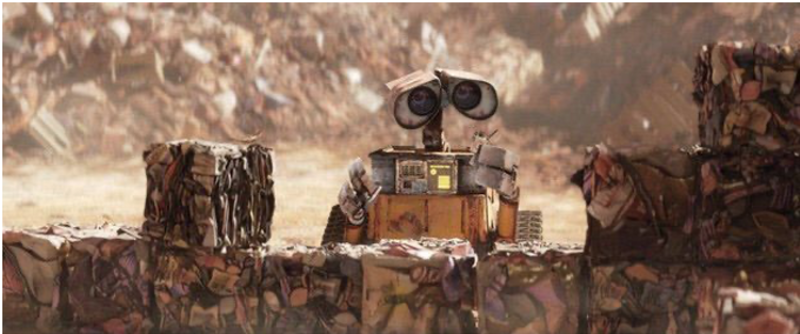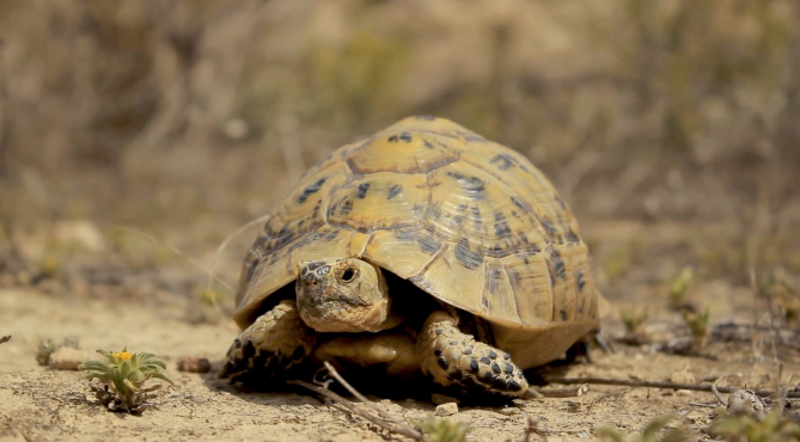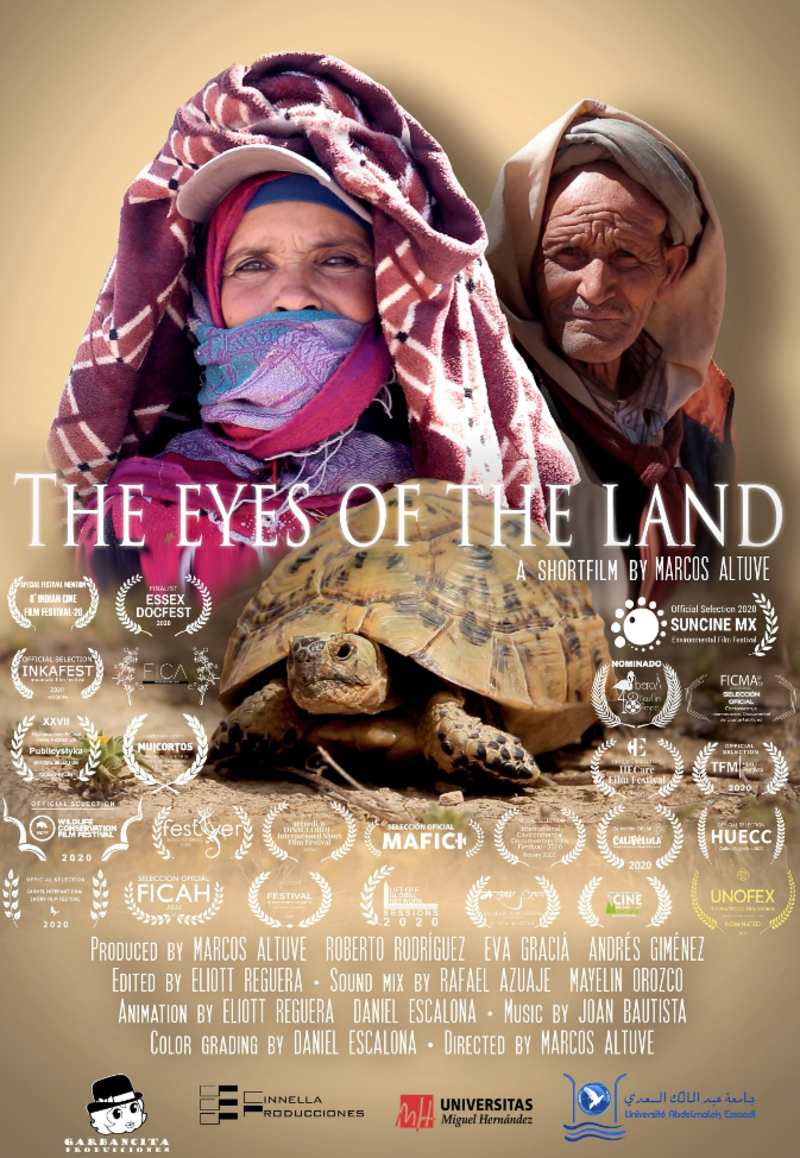Documentaries as a way to communicate research to the broader public
[ENG]. [La versión es español está abajo]
Biodiversity loss is one of the main challenges for ecosystems. Species are disappearing at unprecedented levels modern history. Climate change, habitat loss, pollution, overexploitation, and the introduction of alien species are the main threats for the persistence of the biodiversity. Human beings are the main drivers of these threats, but the power to reverse these extinction processes is also in our hands.
Management and conservation policies have saved many species in the last decades. The communication of the main problems facing biodiversity is necessary to save ecosystems. Sometimes, environmental education, awareness of environmental problems, or the studies carried out in research centres do not reach most of the public. For this reason, using alternative media such as art or culture can be of great help to reach out to a broader audience.
In particular, cinema has been used to communicate environmental problems and raise awareness about the main threats to biodiversity or even the persistence of the planet. Examples include films like “Wall-e” (2008), which made us (young and old people) become aware about the amount of garbage we are generating, or Erin Brockovich (2000), in which Julia Roberts played an environmental activist who fought against a big polluting company. On the other hand, great documentaries such as "Darwin's Nightmare" made visible and actively denounced the serious socio-ecological problems in Lake Victoria. Cinema industries offer a huge scope and, thus, as a researcher, being supported by filmmakers may allow us to go beyond the screen and sneak our message into people's homes.

Fig 1. Frame of the film Wall-e, where a robot lives alone in Planet Earth, after it's been abandoned by mankind due to pollution, and he has hte task of cleaning it up. Disney Pixar Studios
In 2020, I had the opportunity to participate in a short documentary as a scientific advisor. Through this opportunity, I have witnessed the social impact that science can achieve through these audiovisual tools. "The eyes of the land" is a documentary made by the Venezuelan filmmaker Marcos Altuve and produced by the Miguel Hernández University of Elche (Spain) in collaboration with the Abdelmalek Essaâdi University of Tetuan (Morocco). This short film depicts one of the expeditions of the research group in Morocco. The project aims to ascertain the distribution and abundance of the spur-thighed tortoise (Testudo graeca), especially in areas that have not been previously explored. To achieve this objective, we conducted interviews with local shepherds, who provide us with information about presence / absence of the species and its abundance. The documentary narrates the day-to-day of this work, including the challenges we faced. Overall, this documentary aims to highlight the importance of local knowledge for the development of science.

Fig 2. Frame of an individual of the spur-thighed tortoise (Testudo graeca) from the short documentary film The eyes of the land. Credit: M. Altuve.
I remember its preview, where friends, family, and colleagues came to see the film. It was very satisfying to see how in just 15 minutes it was possible to connect with the public, communicating that these tortoises are threatened wildlife fauna living in desert areas, that shepherds have got very important knowledge about socio-ecological processes that directly affect this species, and that our work try to maintain viable the current tortoises’ populations for the future depends on all of the above. Especially exciting was when my parents (despite the number of times I explained my work to them) told me, "Now we have a good idea of what you did in Morocco, and we think that the work you do is very important for the biodiversity conservation”.
This documentary has been selected in more than 60 film festivals throughout five continents, obtaining 12 awards to date and being screened for thousands of people. We recorded the film just with one camera and a brave filmmaker whom we invited to our expedition. He had to deal with different languages, the lack of electricity to charge batteries (sometimes we have to sleep in tents), and the strong sandstorms, among other technical problems. The result was in my opinion incredible. This low-budget short film is but an example of the use of cinema as a tool to raise awareness about environmental problems and to showcase the work that science does to find solutions to very pressing issues.

Fig 3. Poster of the short documentary film The eyes of the land.
If you are interested in this work, you can access the trailer of the short film here: https://vimeo.com/452790085
By Roberto Rodriguez, postdoc at the SalGo team
[ESP]
La pérdida de biodiversidad es una de las principales amenazas a las que nos enfrentamos hoy en día. Las especies están desapareciendo a niveles nunca vistos en la historia moderna. El cambio climático, la perdida de hábitat, la contaminación, la sobreexplotación de los recursos y la aparición de especies exóticas invasoras son las principales amenazas a los que muchas especies se enfrentan hoy en día. El ser humano es el principal causante de estas amenazas, pero también está en nuestra mano el poder de revertir estos procesos de extinción.
Las políticas y medidas de conservación han salvado en los últimos años a muchas especies. Comunicar y concienciar sobre los principales problemas a los que se enfrenta la biodiversidad es necesario para poder seguir avanzando. Muchas veces la educación ambiental, la concienciación de los problemas o el trabajo que se hace en los centros de investigación no alcanzan la mayor parte del público general, por este motivo utilizar medios alternativos como el arte o la cultura pueden ser de gran ayuda para llegar a más audiencias.
En concreto, el cine, se ha utilizado para transmitir problemas ambientales y concienciar sobre las principales amenazas de la biodiversidad o de la propia persistencia del planeta. Ejemplos de películas como “Wall-e” (2008) que nos hizo (a grandes y pequeños) tomar conciencia de la cantidad de basura que generamos o cuando Julia Roberts encarnó a Erin Brockovich (2000), una activista medioambiental que luchó contra grandes empresas contaminantes. Por su parte, grandes documentales como “La Pesadilla de Darwin” sirvieron para visibilizar y denunciar los graves problemas socioecologicos en el Lago Victoria. El alcance de la industria audiovisual es muy fuerte y, como científicos, apoyarnos en ella nos permite atravesar las pantallas y colarnos en los hogares de las personas.
En 2020, tuve la oportunidad de participar en un corto documental como asesor científico. A través de esta oportunidad, he podido comprobar el impacto social que puede alcanzar la ciencia por medio de estas herramientas audiovisuales. “Los ojos de la tierra” es un cortometraje documental realizado por el cineasta venezolano Marcos Altuve y producido por la Universidad Miguel Hernández de Elche (España) en colaboración con la Universidad de Abdelmalek Essaâdi de Tetuan (Marruecos). Este cortometraje ha servido para mostrar una de las expediciones del grupo de investigación en Marruecos. El proyecto que realizamos allí pretende conocer la distribución y la abundancia de la tortuga mora (Testudo graeca), especialmente en zonas que no han sido exploradas previamente. Con el fin de alcanzar este objetivo, realizamos entrevistas a pastores locales para que nos dieran información de la presencia/ausencia de la especie y de su abundancia. El documental cuenta el día a día de los problemas a los que nos tenemos que enfrentar y pretende poner de manifiesto la importancia del conocimiento local para el desarrollo de la ciencia.
Recuerdo su preestreno, donde amigos, familiares y compañeros de la profesión se acercaron a verlo. Fue muy satisfactorio ver como en tan solo 15 minutos se podía transmitir que las tortugas están amenazadas, que habitan silvestres en zonas desérticas, que los pastores tienen un conocimiento muy importante sobre los procesos socioecologicos, y que nuestro trabajo busca que las poblaciones de tortuga que están hoy en día sean capaces de persistir en el futuro. Especialmente emocionante fue cuando mis padres (a pesar de la de veces que les explicado mi trabajo) me dijeron, “ahora ya sabemos que hacíais allí y nos parece muy importante el trabajo que realizáis”.
Este documental ha sido seleccionado en más de 60 festivales de cine a lo largo de los cinco continentes obteniendo a fecha de hoy 12 reconocimientos y siendo proyectado ante miles de personas. Este cortometraje fue realizado con una cámara y un valiente director de cine al que invitamos a nuestra expedición, y que tuvo que enfrentarse a diferentes idiomas, falta de electricidad para cargar baterías y vientos cargados de arena, entre otros problemas. Sin embargo, el resultado y el alcance fue increíble. Este documental de bajo presupuesto es solo un pequeño ejemplo del uso del cine como herramienta para concienciar sobre problemas ambientales y el trabajo que realiza la ciencia para buscar soluciones.
Si os interesa este trabajo, podéis acceder al tráiler del cortometraje aquí: https://vimeo.com/452790085
By Roberto Rodriguez, postdoc del SalGo Team



